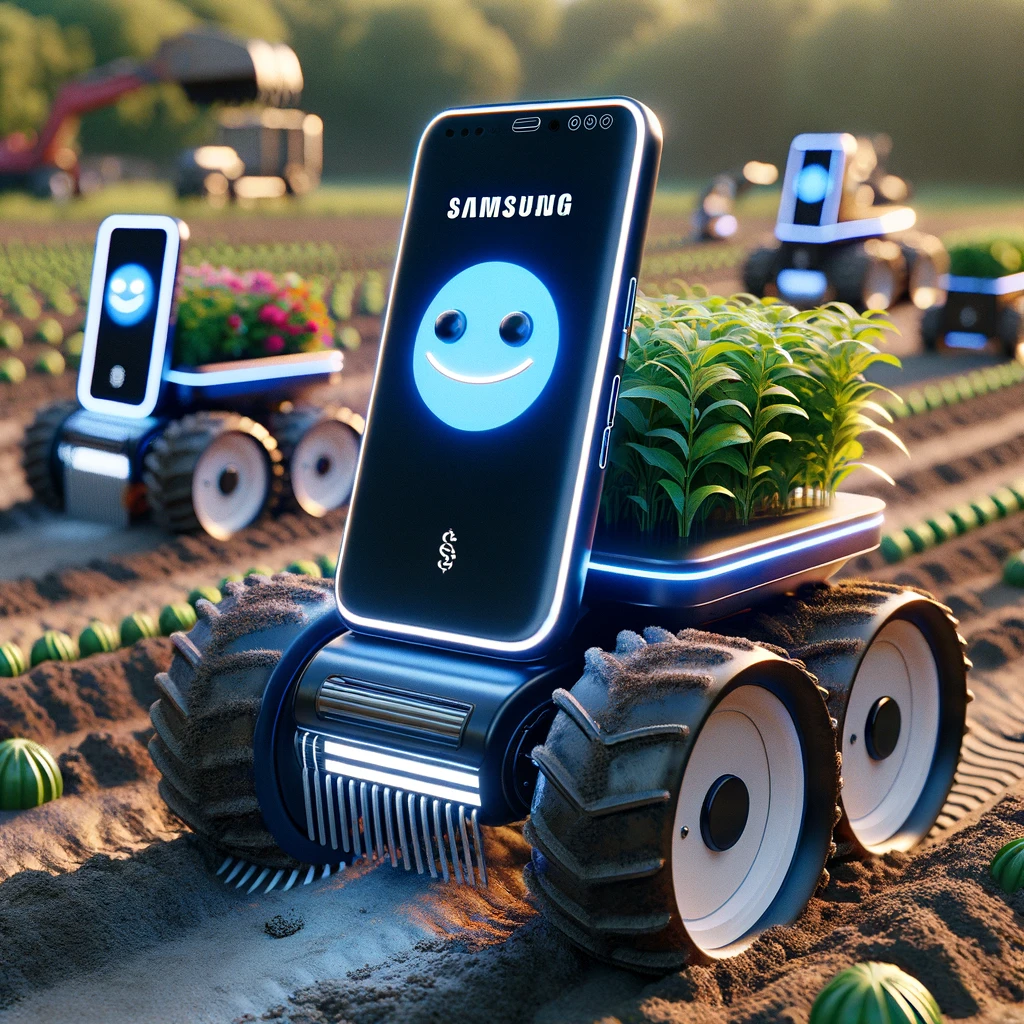Smart Cyber Bot

We have to build systems able to understand and take care of ornamental and food plants that have to be cheap! They can help with the harvest, in the optimization of weeding spraying, monitoring of disease/pests, vegetables and fruit picking, in the poorest areas of the world, where everyone has a smartphone. Here are the images of small agricultural robots, each about 30 cm in size, designed like optimized rovers for garden work. The robots have heads designed like current Samsung smartphones, displaying smiling faces on their screens. They are depicted actively engaged in various tasks in a field or garden.
Smartphone-based robots designed for gardening, commonly known as “smart garden robots,” operate by leveraging the power of smartphone technology and connectivity to assist with various tasks in the garden or on the farm. These robots are equipped with sensors, cameras, and sometimes specialized tools that allow them to perform tasks like planting, weeding, watering, and monitoring plant health. Here’s a more detailed explanation of how they work and why they are useful:
-
Sensors and Cameras: Smart garden robots are equipped with sensors that can detect environmental conditions such as soil moisture, temperature, and sunlight levels. They also have cameras that provide visual input. These sensors and cameras help the robot gather data about the garden’s current state.
-
Data Analysis: The robot processes the data collected by its sensors and cameras. Using algorithms and artificial intelligence, it can analyze this information to make decisions about what actions need to be taken.
-
Action Execution: Based on the analysis, the robot can perform a range of tasks. For example, it can identify areas of the garden that require watering and use built-in mechanisms to dispense the right amount of water. It can also identify and remove weeds, plant seeds, or even apply fertilizers when needed.
-
Remote Control: One of the key advantages of smartphone-based robots is the ability for users to remotely control them through a mobile app. This means gardeners or farmers can monitor and manage their gardens from anywhere with an internet connection. They can adjust settings, initiate tasks, or receive alerts and updates about their garden’s status.
-
Efficiency and Precision: Smart garden robots are designed to work efficiently and with a high degree of precision. They can optimize resource usage, such as water and fertilizer, which contributes to more sustainable gardening practices. Additionally, they can work around the clock, ensuring that the garden is tended to consistently.
-
Labour and Time Savings: These robots can significantly reduce the manual labour required for garden maintenance. They can perform repetitive tasks tirelessly and accurately, saving gardeners and farmers a considerable amount of time and effort.
-
Maximizing Crop Yield: By maintaining optimal growing conditions and addressing issues promptly (like pest infestations or plant diseases), smart garden robots can help maximize crop yields. This is especially important in large-scale agriculture where every harvest is critical.
In summary, smartphone-based robots in gardening are valuable because they combine technology and automation to enhance efficiency, reduce labour, and improve the overall health and productivity of gardens and farms. They are particularly beneficial for individuals or organizations looking to streamline their gardening or farming processes, make data-driven decisions, and achieve better results while conserving resources.
